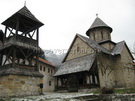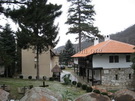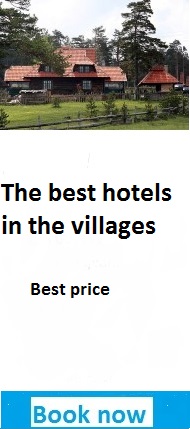Monasteries of the Ovcar-Kablar gorge
The Ovcar-Kablarska gorge is an area of outstanding natural beauty, well known for its monasteries clustered together on a small area of land. Monasteries of the Ovcar-Kablar gorge as a whole are of an outstainding importance for a wider area because of their cultural and artistic value and marvellous scenic beauty of the area. The Ovcar-Kablar monasteries form one of the most complex sacral, cultural and historical wholes in Serbia. There are 10 monasteries in Ovcar-Kablar gorge.
Jovanje Monastery

Jovanje Monastery was dedicated to the birth of the St. John, the Baptist. It is situated on the left blank of the river West Morava, in its biggest meander. Judging by the style in architecture it was erected in the 16th century.
Blagovestenje Monastery
 It is situated on a hiltop of Mount Kablar, above Ovcar Banja spa. It is one of the very few monasteries in the gorge that we know when the monastery was built and who its founders were. The incription over the entrance to the church shows that the church was raised in 1601/02. The monastery has one of the oldest books, Blagovestenje Gospel, written in 1372.
It is situated on a hiltop of Mount Kablar, above Ovcar Banja spa. It is one of the very few monasteries in the gorge that we know when the monastery was built and who its founders were. The incription over the entrance to the church shows that the church was raised in 1601/02. The monastery has one of the oldest books, Blagovestenje Gospel, written in 1372.
Nikolje Monastery

Nikolje Monastery is the oldest monastery of the Ovcar-Kablar gorge. It was erected on the slopes of Mount Kablar, on the left bank of the river Zapadna Morava. By architectural features, it supposedly dates bak to the Midle Ages, most probably to the end of the 15th century. The architecture of Nikolje Monastery is modest, however this is the only monastery in the gorge whose architecture has remained preserved since the Mediaval times (this makes even more important and precious).
Kadjenica Church
On the right bank of the West Morava river, one kilometer upstream Ovcar Banja lies Kadjenica Cave. Two stone sarcophagueses with a Crucifixion are testimony to an unpleasant event that happened during the Hadzi-Prodan Uprising in 1814. People took shelter in this cave from the Turks. However, they were found, and Turks put some straw and branches at the entrance and set it on fire, so all people inside the cave choked from smoke (kad). Since that time the place has been called Kadjenica (smoke burnt).
Up to 1940, the bones lay in the cave, covered with dust and ashes. That year the bones were collected and buried in the stone sarcophagueses.





